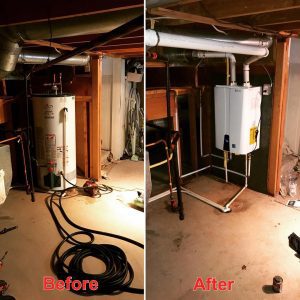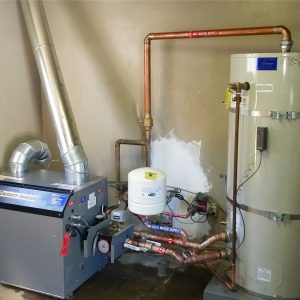

Advanced Boilers & Hydronic Heating
How To Maintain The Water Level On A Steam Boiler?
How Low Can the Water Go?
When the water level in your boiler drops below the lowest permissible water level, or even farther below the top of the tubes, this is what is called a low water condition. When this happens, this allows the lines to overheat. Should you find that the water inside your boiler goes even lower than the main firing tube, or known as the “Morrison tube,” the steel itself may very well fail. Long story short, this can all be avoided with a little proper boiler maintenance and therefore decreases your chances for boiler repair or replacement.
What is damaged by Low Water?
Here are a few sides effects of damage caused by low water:
- Tubes cracked
- Water leaking
- Tubes loosened
- Metal melted
One of the most dangerous scenarios can happen when you add water to an overheated boiler. When the boiler has reached this state, it is at the “point of no return,” as this tends to cause the water to turn into steam immediately and leads to a massive buildup of created pressure. At this point, the boiler becomes faulty and can essentially explode if there is enough pressure buildup. As you can see, this is one, if not the most, dangerous outcomes that can happen with any boiler that you should avoid.
How to Prevent Low Water:
- Checking the sight glass is probably the first most straightforward way to tell if the water in your boiler is low. Often this is the only visual used to check on your boiler’s water level. It is a good idea to familiarize yourself with the usual water level in your sight glass to be more aware of when/if the water level does drop.
- Besides keeping a visual on the sight glass, having low water cutoffs is another excellent way to prevent low water. Some boilers use floating bulbs where the low water cutoff will shut your boiler down if the bulb ever hits the cutoff level. What is this level? It is several inches that are above the tubes. In choosing to have a float system, you must have it vented regularly to prevent any buildup that can happen over time
- Other low water cutoff systems use a submerged probe into the water and, therefore, will shut down the boiler if the water is below the minimum permissible water level. It is always beneficial to have a first and second low water cutoff. Whether you mix and match float and probe styles, or even if you happen to use two probes, it is always a good idea to have two.
Maintaining Water Levels For Maximum Efficiency
It is important to notate those low water cutoffs and your boiler and require maintenance to maintain their efficiency and productivity. Care contributes to your boiler’s longevity and can expand the life expectancy if kept in good working condition. Remember, these systems need to be checked daily or even after each shift on low pressure and high-pressure boilers (typically weekly on low-pressure heating units). For more information check out our Boiler Repair Guide.
Share this post
Boiler Blog Archives
Recent Posts
Categories
Archives
Tags
Related Articles

Service Your Boiler Annually
Check out this information on servicing your boiler system annually. Also check out our other articles on the Advanced Boilers Blog!

Steam Boilers
Steam Boilers emergency call – 24/7 (303) 997-3801 Steam Boilers in Denver, CO: To this day, boilers in general

Low VS High Pressure Boilers
The Columbia Keystone Boiler is a 3-pass, medium to large capacity, dry back, Scotch marine design packaged boiler. This
